-
Bats at the museum
As the sun began to set, the sky darkened with the legion of bats which came out of the Rabat catacombs, noted G. Gulia in 1890 in his book Elenco dei Mammiferi Maltesi. Certainly, the tendency of these nightly creatures to live in such dreaded underground areas didn’t help them much in order not to be associated with evil and darkness. Likewise, their strange semblance, their mythical association with Dracula, and images of Satan bearing their wings, hindered even more their reputation. In Aztec and Mayan cultures, bats were deities connected to death. Yet nothing could be far from the truth since bats have a beneficial role in the earth’s ecosystem.
 The importance of these unique flying mammals was highlighted during a recent activity which was organized by MEPA’s Environment Division in collaboration with Heritage Malta, at the National Museum of Natural History in Mdina. This annual event, recognized as Malta Bat Night, included a discussion about bats and listening to their sounds through an electronic device.
The importance of these unique flying mammals was highlighted during a recent activity which was organized by MEPA’s Environment Division in collaboration with Heritage Malta, at the National Museum of Natural History in Mdina. This annual event, recognized as Malta Bat Night, included a discussion about bats and listening to their sounds through an electronic device.“Malta Bat Night forms part of a partnership which we have with the European Union for the Research and Conservation of Bats,” explained John Joseph Borg, Senior Curator at the National Museum of Natural History.
“Such events are aimed to inform the public about bats in the hope of removing the negative impression that people have about them. Along the years, bats have decreased considerably in Malta, both because their habitat has often been disturbed, and also due to direct acts of vandalism which were carried out upon them.”
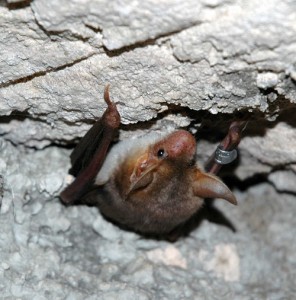 Indeed, Borg explained that colonies of bats have been repeatedly put on fire whilst they were resting in their caves. Others were smothered when vandals threw mud and other things at them, even though they were clearly being protected behind a gate, such as in the case of Ħasan Cave. Bats of a small colony which lived in a site that had access to a particular school, were burnt alive by school children after they captured them and drenched them in hot candle wax.
Indeed, Borg explained that colonies of bats have been repeatedly put on fire whilst they were resting in their caves. Others were smothered when vandals threw mud and other things at them, even though they were clearly being protected behind a gate, such as in the case of Ħasan Cave. Bats of a small colony which lived in a site that had access to a particular school, were burnt alive by school children after they captured them and drenched them in hot candle wax.Well, after hearing these stories, it becomes very clear who the evil ones are.
“Unfortunately our culture has taught us to fear and hate these creatures. In actual fact, their presence could be very advantageous to humans,” revealed Borg.
“Many of the bats eat insects and studies have shown that they tend to feed on species that are harmful to humans and to agriculture. Other small bats which have an elongated snout and a long tongue, act as pollinators when they enter into flower tubes to lick the pollen inside and then move onto different plants. Larger bats, which may look spooky and scary, nurture themselves on decaying fruit and therefore, they keep the fruit trees healthy.”
What about the so called vampire bats. Were they real? And do we have them in Malta?
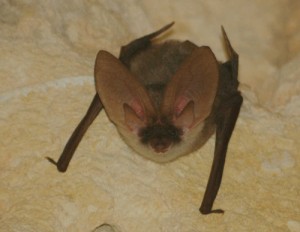 “In contrast to peoples’ impression that all bats can suck blood, most of them thrive on insects, fruit, fish and frogs. The only vampire bats which feed on blood are found in South America and they are pretty small. They are nothing similar to the fictional bats that we see in films. In fact, they do not suck blood but they lick it, thanks to their anticogulant saliva which prevents the blood from clotting. They do not normally attack human beings and neither animals. However, they will feed on any animal available if it is reachable to them, including humans.”
“In contrast to peoples’ impression that all bats can suck blood, most of them thrive on insects, fruit, fish and frogs. The only vampire bats which feed on blood are found in South America and they are pretty small. They are nothing similar to the fictional bats that we see in films. In fact, they do not suck blood but they lick it, thanks to their anticogulant saliva which prevents the blood from clotting. They do not normally attack human beings and neither animals. However, they will feed on any animal available if it is reachable to them, including humans.”Borg informed me that we have seven resident species of bats which are: Lesser Horse-shoe Bat (Rhinolophus hipposideros), Maghrebian Bat (Myotis punicus), Grey Long-eared Bat (Plecotus austriacus), Savi`s Pipistrelle (Hypsugo savii), Kuhl`s Pipistrelle (Pipistrellus kuhlii), Common Pipistrelle (Pipistrellus pipistrellus), and Soprano Pipistrelle (Pipistrellus pygmaeus).
 “We have bats from all these resident species living in this museum,” smiled Borg who has an avid passion about bats. “In the underground tunnels there are the Lesser Horse-shoe and the Maghrebian Bats, whereas in the rooms of the underlying level, one finds the Grey Long-eared and the Lesser Horse-shoe Bats. Moreover, all the four Pipistrelle species have managed to make a home in some cracks of the facade and on the high beams.”
“We have bats from all these resident species living in this museum,” smiled Borg who has an avid passion about bats. “In the underground tunnels there are the Lesser Horse-shoe and the Maghrebian Bats, whereas in the rooms of the underlying level, one finds the Grey Long-eared and the Lesser Horse-shoe Bats. Moreover, all the four Pipistrelle species have managed to make a home in some cracks of the facade and on the high beams.”From the remains of moth wings which Borg collects from the museum floor early in the morning for his studies, he is able to identify more information about his resident bats, such as what they prey on. Interestingly, each small Pipistrelle is able to eat around 20,000 moth each night, thereby being more effective than the insect sprays which we use. Nonetheless, most people have no idea about this and when they realize that they are co-habitating with bats, hell breaks lose.
“We do receive calls from people who request us to remove bats from their properties. It is very rare that these creatures enter into homes. Usually they live in cracks in external windows or in narrow openings in facades. Some of the bats are minute in size and in fact, five of them can be placed in a matchstick box. Generally, once these people realize that these animals will be doing no harm to them or to their family, they will agree to allow them to stay. Yet there were cases when the individuals concerned were adamant that they wanted them removed.”
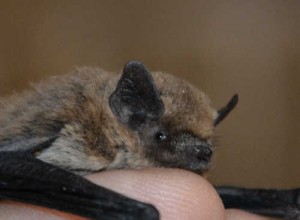 In such cases, Borg or other responsible officials will need to go and survey the bats before taking action. This involves counting them daily for a whole week in order to confirm the exact amount of bats that are roosting in this place. Once, this amount is identified, they will wait until all the bats are out at night and then they will block the nest in order not to let them in again. Eventually, when the bats will return home and realize what happenned, they will automatically move away to a second area which they tend to keep as a form of protection.
In such cases, Borg or other responsible officials will need to go and survey the bats before taking action. This involves counting them daily for a whole week in order to confirm the exact amount of bats that are roosting in this place. Once, this amount is identified, they will wait until all the bats are out at night and then they will block the nest in order not to let them in again. Eventually, when the bats will return home and realize what happenned, they will automatically move away to a second area which they tend to keep as a form of protection.“This procedure to count bats is very important because they do not always leave the nest in the same number. Usually, a scout bat will fly out first in order to check whether it is windy and whether there are enough insects available in the area. If he returns, the others will stay inside but if he does not, they will understand that the situation is favourable and they will fly out too.”
I couldn’t help feeling impressed by these creatures. Yet more was still to come.
 “The courting and copulation of bats takes place in autumn, between October and November. Then, as soon as the temperature drops and insects are more rare, they will fall in a state of torpidity which is a short period of sleep. During this time, the sperm with which the female has been fertilized will remain stored inside her, waiting for the right moment to come. Once the tempertaure gets warmer and insects become available, these bats will wake up and the real preganancy will start. In this way, both the mother and the offspring will have a better chance to survive.”
“The courting and copulation of bats takes place in autumn, between October and November. Then, as soon as the temperature drops and insects are more rare, they will fall in a state of torpidity which is a short period of sleep. During this time, the sperm with which the female has been fertilized will remain stored inside her, waiting for the right moment to come. Once the tempertaure gets warmer and insects become available, these bats will wake up and the real preganancy will start. In this way, both the mother and the offspring will have a better chance to survive.”Although there are some who associate bats with flying mice, Borg informed me that there is nothing common between the two. While mice come from the order Rodentia, bats form part of the order of Chiroptera (meaning hand-wing).
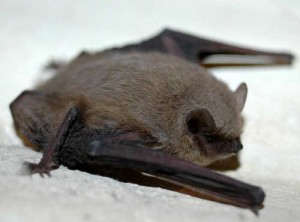 “The oldest bat fossils date back to 55 million years ago where this mammal had already the shape which we know today. On the other hand, the oldest fossils which were found in Malta go back to the Ice Age at around 200,000 and 10,000 years ago. These were found during excavations at Għar Dalam and so we can say that these ancient bats remember the dwarf elephants and hippopotami roaming around. At this museum, we do hold a sample of these fossils. However, the majority of them were taken by the foreign researchers who were doing the excavations, and these passed on their discoveries to their relative museums.”
“The oldest bat fossils date back to 55 million years ago where this mammal had already the shape which we know today. On the other hand, the oldest fossils which were found in Malta go back to the Ice Age at around 200,000 and 10,000 years ago. These were found during excavations at Għar Dalam and so we can say that these ancient bats remember the dwarf elephants and hippopotami roaming around. At this museum, we do hold a sample of these fossils. However, the majority of them were taken by the foreign researchers who were doing the excavations, and these passed on their discoveries to their relative museums.”In the Mdina museum, one can also find some current bat specimens. Borg insisted that it is not the policy of the museum to capture and kill creatures in order to preserve them. So, one won’t find a specimen for each species which live in Malta. Nevertheless, the museum will do his best to assist whoever will request information about bats.
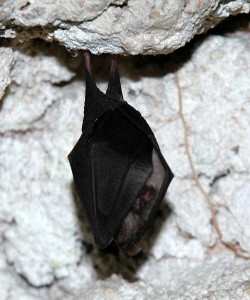 Borg’s own interest in bats goes back to the 1980s. Originally fearful of them, he came face to face with these bats whilst he was doing bird studies and these nightly creatures were being captured accidentally in nets. At first nervous, he asked others to remove them for him, until one day, he decided to do the job himself.
Borg’s own interest in bats goes back to the 1980s. Originally fearful of them, he came face to face with these bats whilst he was doing bird studies and these nightly creatures were being captured accidentally in nets. At first nervous, he asked others to remove them for him, until one day, he decided to do the job himself.From then on, he was completely captivated by them and has been studying them ever since, eager to share his knowledge in the hope of fostering more interest from the public.
It is safe to say that Malta Bat Night has certainly gone a long way towards achieving this.
(This article was published in Escape Suppliment issued with the Sunday Times of Malta dated 29th November 2015)
Category: The Sunday Times - Articles | Tags: Aztec,bat,Common Pipistrelle,Dracula,Elenco dei Mammiferi Maltesi,Fiona Vella,Ghar Dalam,Grey Long-eared Bat,Hasan Cave,Heritage Malta,Hypsugo savii,Kuhl`s Pipistrelle,Lesser Horse-shoe Bat,Maghrebian Bat,Malta,Malta Bat Night,Mayan,MEPA Environment Division,Myotis punicus,National Museum of Natural History in Mdina,Pipistrellus kuhlii,Pipistrellus pipistrellus,Pipistrellus pygmaeus,Plecotus austriacus,Rhinolophus hipposideros,Satan,Savi`s Pipistrelle,Soprano Pipistrelle,South America